Gumball machines have a certain charm that is difficult to explain, but they certainly draw attention and are objects that look great as part of any room’s décor.
If you want to get started in the fascinating world of collecting antiques, these charming articles can be a great starting point.
This guide will teach you about its history, models, how to tell the real ones from the fakes, and market prices.
Table of Contents
The Origins of the Gumball Machine
Vending machines, contrary to popular belief, have been around for centuries. Heron of Alexandria, a Greek engineer, and inventor, designed the first vending machine to dispense holy water in the temples of Thebes and Upper Egypt.
This machine, located at the temple’s entrance, had a coin mechanism and was designed so that a five-drachma coin inserted into the machine provided water for washing the face and hands.
The coin’s weight caused one side of a scale inside the machine to fall and the other to rise, releasing a valve that let the water out. The coin eventually falls to the ground, and the balance returns to its original position, closing the valve.
A significant leap in time is required to see the true development of vending machines as we know them, beginning with the industrial revolution.
The first postcard vending machines were installed in London in the early 1880s. Vending machines have since become popular in other European countries before gaining popularity in the United States.
In 1888, the Thomas Adams Gum Company was the first manufacturer of these machines and installed the first gumball machines on New York subway platforms.
Thomas Adams was not only the company’s founder (they didn’t put much effort into company names at the time), but he also invented the first Tutti-Frutti flavored gum.
He had a great vision for the business by placing the first gum dispensers in the New York subway, which thousands of New Yorkers passed through every day to get to work and get around.
This could explain why gum dispensers became so popular overnight. They not only sold Tutti-Frutti-flavored gum, which Adams had invented but also the popular anise-flavored Black Jack.
These early versions of gum were flat tablets, but a few years later, the same Thomas Adams Gum Company invented gum in the form of small balls, which they sold for one cent each.
By that time, the model of gum dispensers had been changed to something very similar to what we all have in our collective unconscious when we think of gum machines.
The classic machines consist of a large transparent glass globe filled with multicolored gum balls and a metal base painted bright red.
The gumball machines were all made of cast iron and covered in red porcelain. The supports were clawed feet, and the lid on top of the glass ball was removed to refill the machine with gum.
After World War II, industries began to reduce production costs in all areas. The gumball machines were no different.
Aluminum and plastic replaced cast iron, porcelain, and glass. The machines’ moving parts were also removed, but new models were developed, and gum machines became increasingly popular and well-known.
The Hawkeye Novelty model, which gave a free piece of gum for every ten cents, was banned in the United States during the Prohibition Era because it looked too much like a slot machine.
The Oak Acorn gumball machines are still one of the most popular models made today.
Gumball machines over 100 years old are considered antiques and are in high demand at auctions and online stores.
Models of Gumball Machines
All experts agree that machines manufactured at the beginning of the twentieth century are unquestionably the most desired and valued in the market.
There are multiple models available, but the ones listed below are the most representative and outstanding.
Machine from 1898
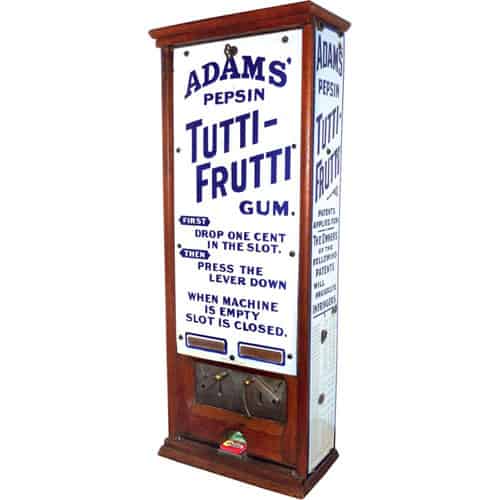
The oldest of them all. It sold Adams gum with tutti frutti and anias flavors. They were rectangular wooden dispensers, similar to a cabinet. Far from the colorful and playful version of gumball machines we know today.
Pulvers One Cent
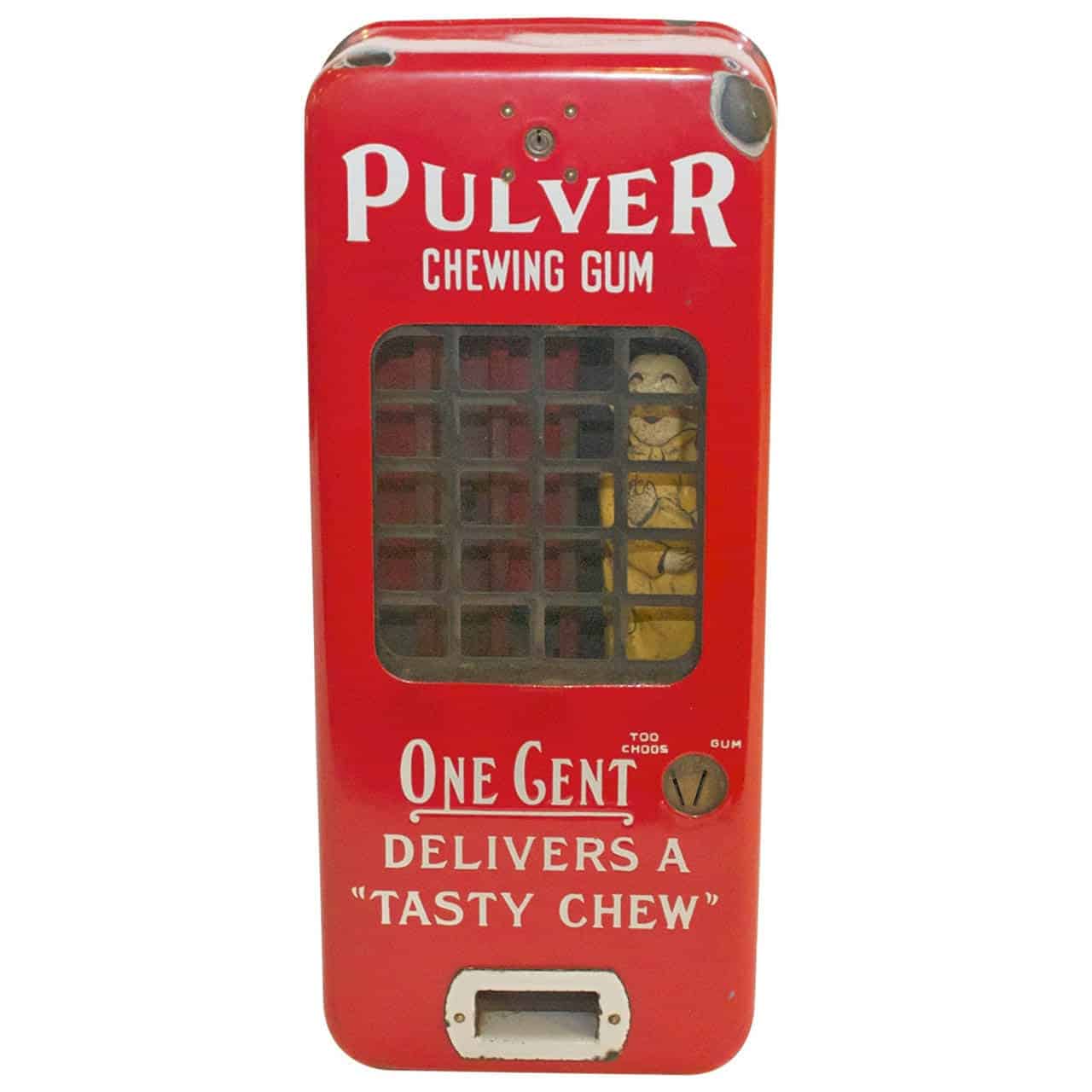
These machines are available in both wood and cast metal. It was the first machine to introduce the playful element, giving out a piece of gum for a penny on the dollar.
A mechanical doll inside the machines was in charge of picking up the gum and letting it fall through the mechanism that led it to the compartment where you could pick it up.
The doll was the Yellow Kid, an animated character from one of America’s first comic strips.
They are highly valued by collectors and are extremely difficult to locate. These models are valued at between $7,000 and $10,000.
Carousel Gumball Machines
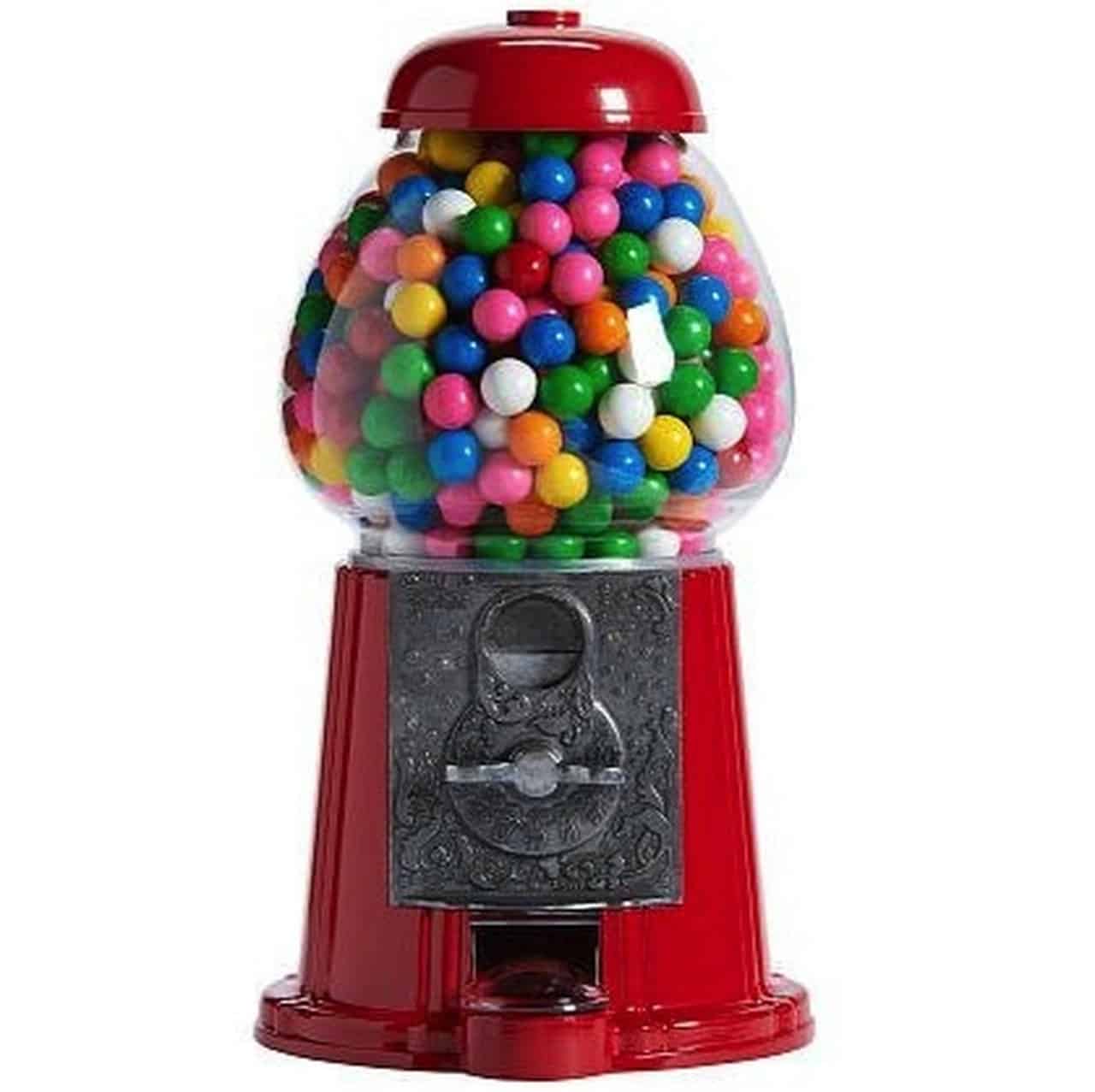
This may be the most well-known and representative model of all. This model, manufactured by the Ford Gum Company in 1934, became the most popular of all.
Many brands of various products used it to print their logos and make it part of their advertising strategy. Coca-Cola, for example, had its logo etched into the glass ball of these machines.
These models are still being produced today. The company continues to produce original machines, but the market is flooded with knockoffs like these.
Northwestern Model 33
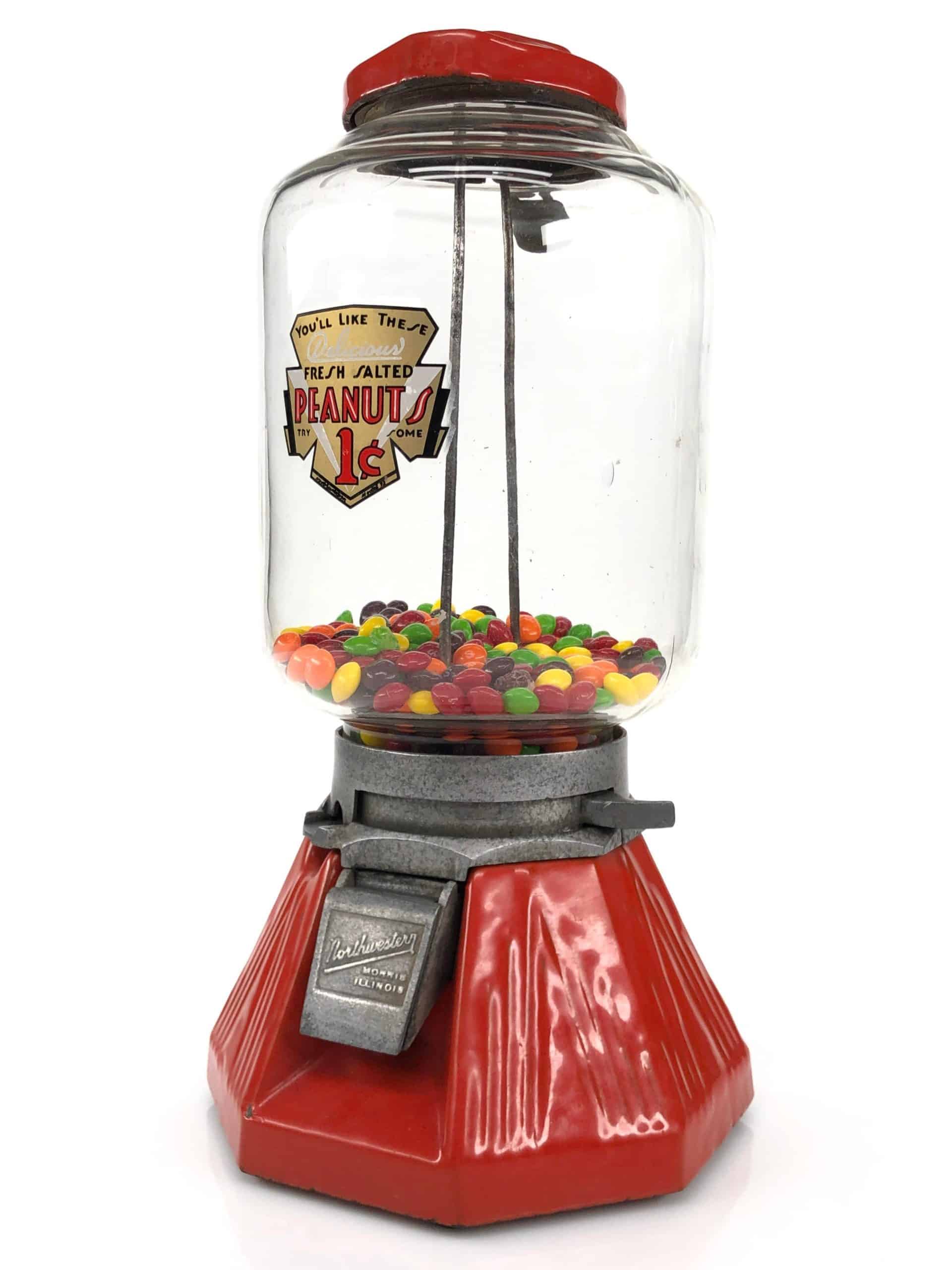
Created by Northwestern Corporation in 1933. It is named Model 33 for the year it went on sale. Similar models are still being manufactured today, such as the Northwestern Model 60 and 80.
Very similar to the Carousel model, but instead of having the glass in the shape of a ball, it has it in the shape of a cylinder.
Blinking Eye
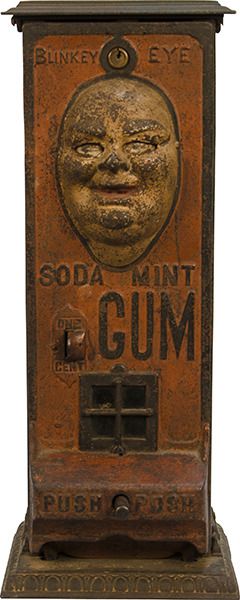
This is yet another unusual 1930 model. It is made of cast iron and features a clown’s face with a slightly macabre appearance.
It sold mint gum, and when you inserted the coin, the character’s eyes blinked to indicate that the gum had been delivered.
This machine is rare and has sold at auction for $15,000, with collectors willing to pay up to $25,000 for it.
Original vs. Replica
Because gumball machines are still popular among collectors and sell well, replicas abound on the market.
These reproductions are intended to be sold as originals to fool people into thinking they are vintage gumball machines, when in fact they are simply modern machines that have been given an antique appearance to charge more money for them.
That is why we want to give you the basic criteria so that you can learn to distinguish a genuine vintage machine from a forgery and avoid being taken advantage of by unscrupulous people looking to make quick money.
Examine the Wood
The majority of the original machines were made of white oak, whereas the fake machines were made of red oak.
Check for details such as deformations in the area and dirt and grime accumulated in cracks and joints.
You’ll notice that fake machines simulate old age by causing artificial wear on the wood. It has sharper and cleaner edges and no dirt or grime buildup at the wood joints.
Metal Casing
The originals are best defined in the letters and engravings that decorate the gumball machine. While the imitations can see some holes and holes in the metal, the molds are not of the best quality.
That is why the pieces have more crude decorations and without as much finishing as the really old ones.
In general, fake parts show signs of shrinkage if we compare them with the original ones and it is also a good idea to check the screws or bolts that the machine has, since the fake ones will have new and shiny screws.
Check the Inside
Always inspect the inside of the machines, as this is where you will find the majority of the details that can indicate a fake replica.
If the machine has wooden parts, make sure they are not painted, as the originals did not cover them with paint on the inside, whereas the fakes do.
Another excellent tip is to inspect the inside of the machine with your nose. They will smell like chemicals and enamel paint if they are fake. While old machines with wooden parts will always smell musty and even moldy.
Learn More
If you want to get into the world of collecting, there are several pages and books you can look at.
There are books such as Silent Salesmen Too, The Encyclopedia of Collectible Vending Machines, which is regarded as the vending machine bible. Bill Enes wrote it in 1995 and has amassed a large collection of vending machines throughout history.
Are Gumball Machines Valuable?
Gumball machines are valuable items that have not depreciated over time. They are ideal for home use, space decor, and easy to restore.
We’ve left some prices here so you can get a sense of its market value.
- Super-Mint “Blue Bird” Gum Dispenser Circa 1930s — $925.00
- Antique Cast Iron Columbus Model A Coin Operated Peanut / Gumball Machine — $925.00
- Atlas Round Candy/Peanut 1c Dispenser circa the 1940s (red/white) — $495.00
Final Words
We hope that this guide was useful as a base if what you want is to venture into collecting old gumball machines. They are a great acquisition that you can take advantage of in the future.
Remember to have these basics before making any purchases and be very careful not to be fooled by a fake replica.
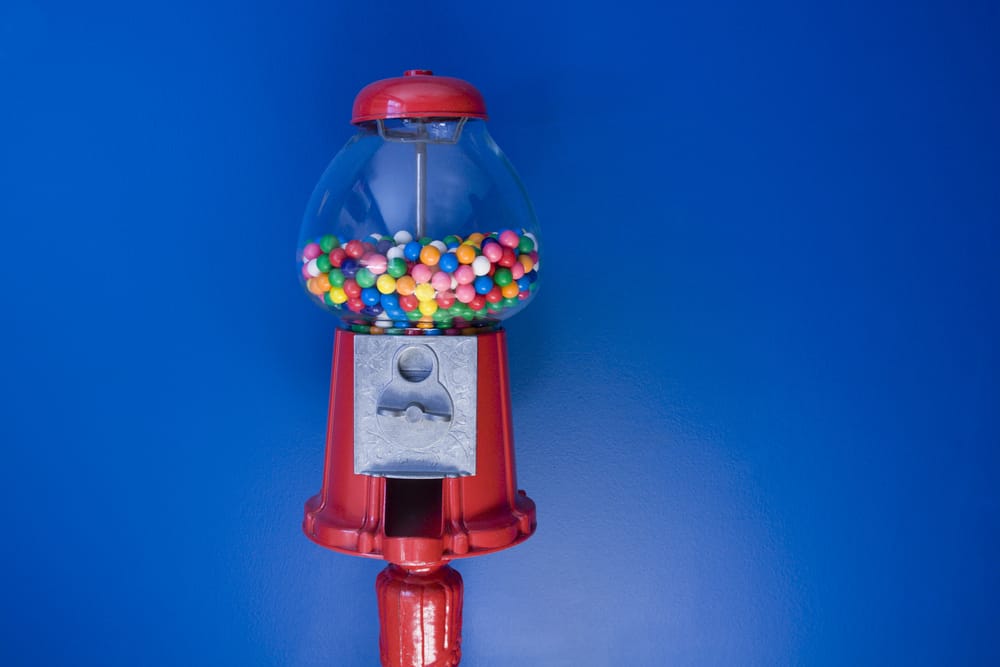
Where are the values and identifications?? You only show a few machines.
Wes